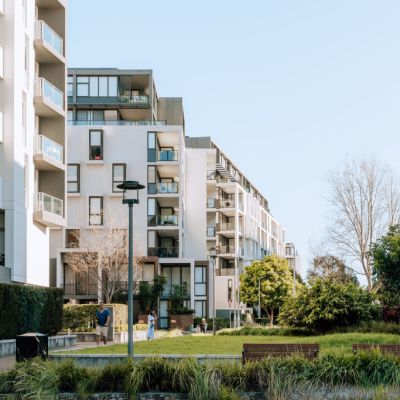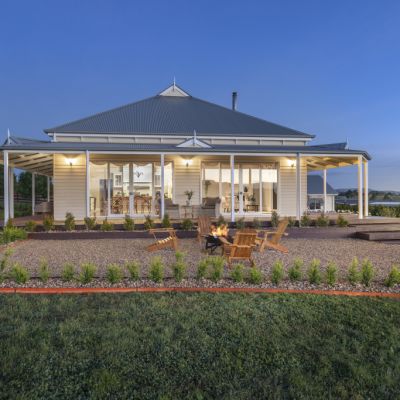The suburbs where house prices dropped most in 2022
House values in a string of sought-after Sydney suburbs have dropped more than 20 per cent over the past year, new figures show, and declines in some pockets of Melbourne and Brisbane are not far behind.
Popular inner-city and coastal Sydney suburbs have had median values plummet this year as consecutive interest rate hikes and affordability constraints reined in buyer demand and spending power.

The 10 largest house value drops nationally were all in Sydney suburbs, CoreLogic’s annual Best of the Best report, released on Tuesday, shows.
House values fell 26.8 per cent in Narrabeen over the year to November 30, to a median just shy of $2,593,000.
Declines of about 25 per cent were recorded in inner-city Surry Hills and Redfern, and falls of more than 20 per cent occurred in nearby suburbs such as Darlington, Camperdown and Newtown, as well as in Birchgrove in the inner west, and Waverley in the eastern suburbs.
In Melbourne, Hurstbridge in the outer north-east had the biggest drop at a 17.6 per cent, followed by Brunswick West, at 17.2 per cent. Affluent Malvern and Malvern East also had double-digit percentage declines, as did Essendon and Balaclava in the inner ring.
In Brisbane, Fairfield had a drop of 19.2 per cent, while values in Wilston, Chermside, Coopers Plains and Moorooka also declined more than 10 per cent.
In Brisbane, values dropped 19.2 per cent in Fairfield and 12.4 per cent in Wilston, both of which were hit by floods earlier this year. Values in Chermside, Coopers Plains and Moorooka also declined more than 10 per cent.
CoreLogic Australia’s head of research Eliza Owen said suburbs had not been uniformly affected by market headwinds and noted more expensive markets tended to have sharper declines.
“More expensive housing markets tend to be associated with higher levels of debt to income, so that’s why Sydney in particular may have been more sensitive to the rising rate environment,” she said.
Sydney’s inner-city suburbs tended to be more volatile due to higher concentrations of investment activity. More speculative buying could lead to more extreme value changes, Owen noted, adding many of the areas had strong uplift during the boom.
Dwelling values in Sydney overall are down 11.4 per cent from their peak, while values in Melbourne and Brisbane have dropped 7.1 per cent and 8.1 per cent respectively.
Sales agent Joshua Perry of Belle Property Dee Why said Narrabeen’s median house value had been skewed lower by fewer high-end sales. Prices were still down 15-20 per cent, but that was off the back of a 40 per cent increase in the boom. He put declines down to rising rates, noting most buyers had been undeterred by flooding in the region earlier this year.
“It’s natural to have a correction after such a steep climb,” he said. “It’s a little bit tougher this year … however if property is priced and marketed well, we’re still seeing them sell in a short period of time.”
Narrabeen has also been affected by easing demand from out-of-area buyers, which helped fuel rapid growth in 2020 and 2021. There was still good interest from north shore buyers, Perry said, but demand from eastern suburbs residents had become almost non-existent.
In Melbourne, Ian Mason, director of Mason White McDougall in Hurstbridge, said there was more demand for family homes than for entry-level properties, but did not think values were down as much as 17 per cent.
“In the four-bedroom family home [market], we are still seeing great demand,” he said.
“What we have seen slow down is probably the lower end of the market, the first home buyer places that are small and need work – they have definitely come back in price.”
Entry-level properties were in greater supply, Mason said, noting first home buyers might be looking to cheaper areas nearby due to concern about rising rates.
It’s a contrast to the lockdown days, when buyers were moving out of the inner suburbs for a tree-change feel and some were purchasing sight-unseen.
In Canberra, values in Torrens and O’Connor fell about 12 per cent, while Mount Stuart had the largest drop in Hobart, down 13.6 per cent.
Declines were more subdued in Perth, where values fell 6.2 per cent in West Perth and 3.8 per cent in Tuart Hill. Not one suburb in Adelaide recorded a price drop.
Outside the capital cities, popular sea and tree-change suburbs that boomed earlier in the pandemic had the biggest price declines.
Suburbs in the NSW’s Richmond-Tweed region – affected by both rising rates and damaging flood events earlier this year – had sizeable declines. Values were down 20.5 per cent in Byron Bay, and by more than 18 per cent in Suffolk Park, Lismore and Mullumbimby.

In Victoria, the biggest suburb declines were largely in Geelong and Ballarat, with prices falling as much as 10.4 per cent in Thomson.
The 10 largest declines in Queensland were all on the Sunshine Coast, the biggest of which was a 12.9 per cent drop in Sunshine Beach.
With Elizabeth Redman
We recommend
We thought you might like
States
Capital Cities
Capital Cities - Rentals
Popular Areas
Allhomes
More










